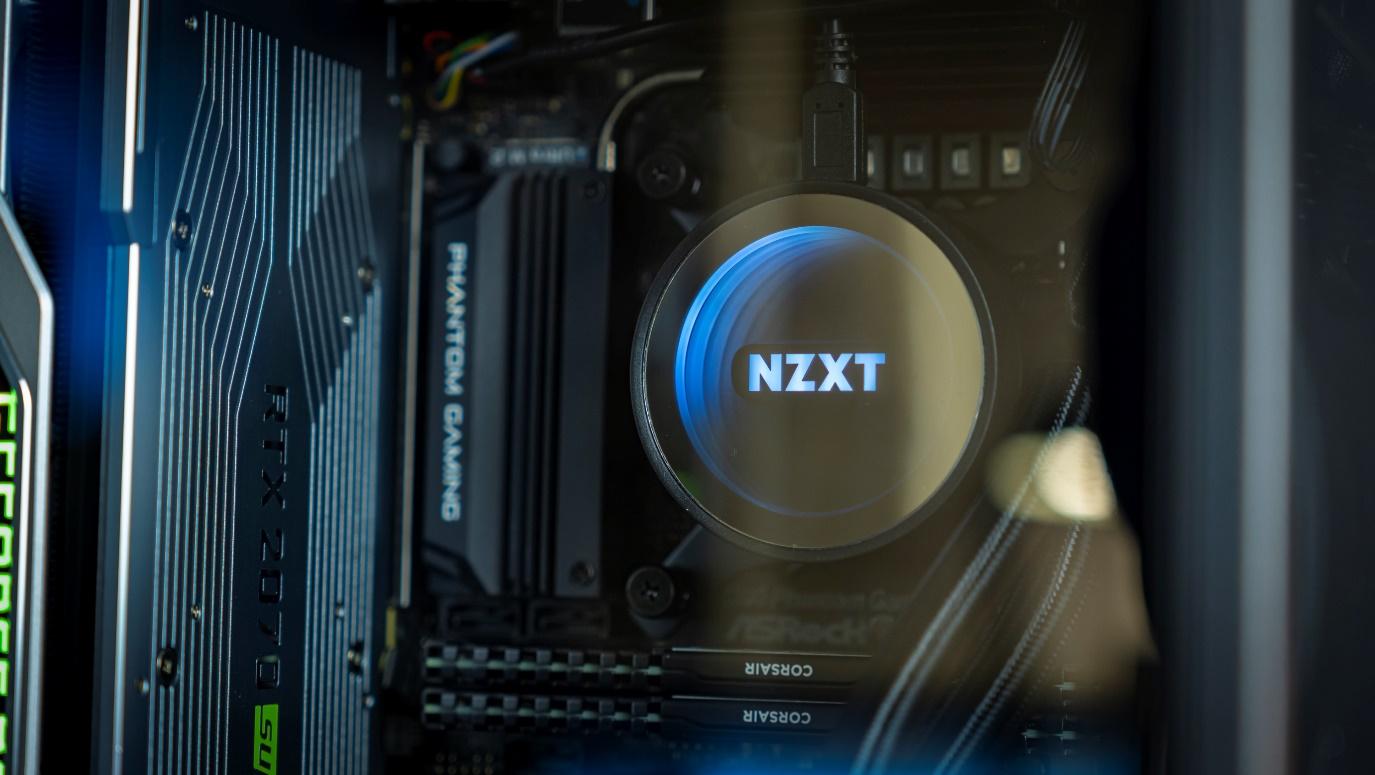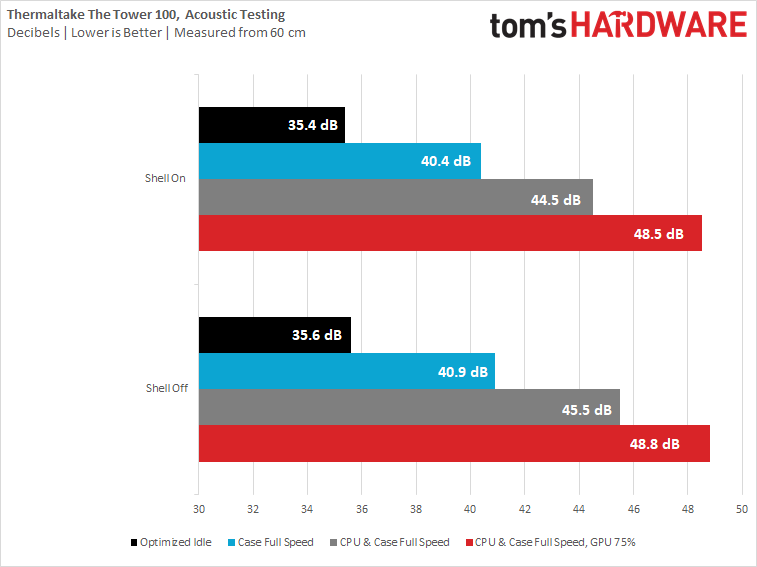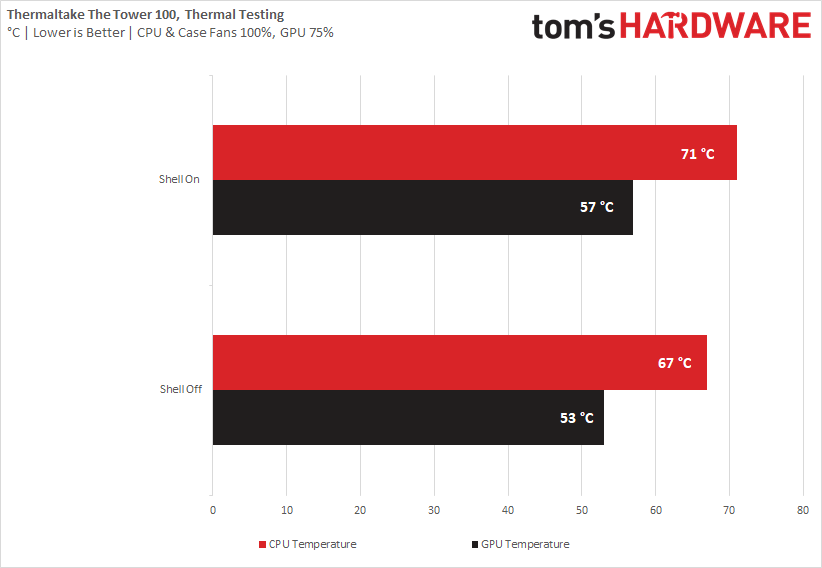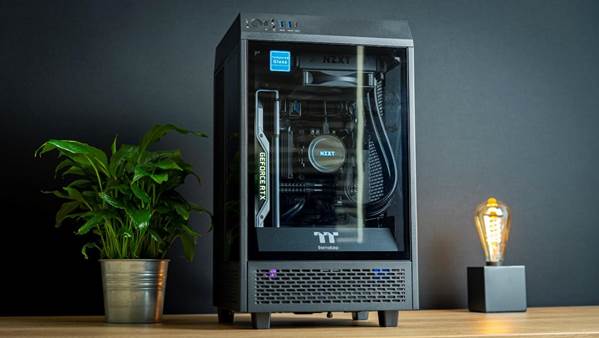Why you can trust Tom's Hardware
Fan Characteristics
The two included fans aren’t great. They’re cheap, feel cheap, and sound cheap. The top fan doesn’t like being suspended upside-down on the bearing, so it makes a bad grinding noise when it starts, and overall the fans are quite loud with buzzy motors. They only feature 3-pin DC control, which isn’t great when your motherboard doesn’t support DC control. So all things considered, if you have the budget for it, replace them. There are only two, so it won’t take much. That said, if you don’t mind the slightly elevated noise levels, they do provide decent thermals and their RPM range is reasonable at between 400 and 1200 RPM, as tested.
For thermal and acoustic testing, other than fan speeds, we’re running the hardware we have entirely at stock settings to mimic the results you can achieve as closely as possible.
Acoustic Results
Acoustically, the chassis performs as expected. Being a mesh case, it lets out most of the noise, suppressing a little bit with the panels on but nothing to write home about. The most important figure to look at is the blue bar, showing the case fans at full speed. At 40.4 dBA of noise, it’s not super quiet, but it’s alright under full load. We’d like for the system to be able to run quieter at idle, but without PWM support and with noisy fan motors, that might be a bit much to ask for.
The two higher figures represent adding the CPU cooler and then the RTX 2070 Super to the mix at 75%. Keep in mind that this is with the CPU fan at full speed and the GPU higher than it will run at its stock settings, so your real-world experience will undoubtedly be better.
Thermal Results
For the thermal tests, all case and CPU fan speeds are set to 100 percent, and the GPU fan is set to run at 75 percent fan speed.
Thermally, the Tower 100 puts down a surprisingly respectable show. I was expecting the two exhaust fans to make hard work of dealing with thermals, but as you can see the system pulled off very respectable temperatures. These numbers are normalized to a 20 °C room, and surprisingly low for a system with just a 120mm radiator and two exhaust fans. Of course, keep in mind that this is with a non-overclocked CPU. But if it were me, I’d use the thermal headroom to create quieter fan profiles.
Conclusion
In summary, I can say that Thermaltake’s The Tower 100 is a surprisingly pleasant chassis. It’s not difficult to build in, offers a unique, fish-tank like appearance, and excellent thermal performance, given its limitations.
Get Tom's Hardware's best news and in-depth reviews, straight to your inbox.
But, it’s important to keep these limitations in mind. There’s only one layout you can use. Removing the side panels is tedious as you’ll have to break out the screwdriver and undo a total of 12 screws to get the case undressed, and cooling potential, although good on the GPU front, is limited to just a 120mm AIO for the CPU.
Cable management is also a bit of an afterthought, and the power LED is far too bright when viewed from a straight-on angle. It’s also quite big as far as Mini-ITX cases are concerned, edging into Micro-ATX territory.
But nothing is perfect in this world, and that which gets close is generally very expensive. The biggest deciding factor in this case won’t be its technicalities, but rather the looks – and if you’re into them, I can tell you that The Tower 100 is a pretty reasonable package to consider and worth its $109 asking price. If you’re not super into the look, alternatives to consider could be the Phanteks Evolv Shift 2 at an identical price point or Lian Li’s O11D Mini for something equally fun but with more customizability, also at the same price.
Niels Broekhuijsen is a Contributing Writer for Tom's Hardware US. He reviews cases, water cooling and pc builds.
-
thepersonwithaface45 Honestly I love how that looks, would be neat to see some better quality versions of this come out.Reply -
cknobman Love how this looks!Reply
This jumps right to the very top of case choices on my next build. -
LaminarFlow I bought the NZXT H1 last summer before the fire hazard problem became public.Reply
There is no excuse in the poor handling of the issue from NZXT's front, but having said that I still haven't been able to find a worthy alternative to the H1, this case included.
At least it's nice to see several ITX cases that adopt the tall-n-slim design. Personally I much prefer this to the short ones that take up a very large footprint. -
80-watt Hamster The design says "popcorn machine" to me more than "fish tank".Reply
I almost want to buy it simply to reward a manufacturer for releasing a new design with a disk activity LED. Shame about the PLED, though. -
IrocD I absolutely love this case. Took some time to get things how I wanted them but it came out fantastic. I agreed with the review about the cooling, and I have an EK clc 120 with 2 coolermaster fans on the rad in push/pull, and even this can be insufficient for my i7-10700, but that more on me for my CPU and cooling choices. The chimney design works great, though there's obviously room in this case for a custom loop if you wanted to. But I'm really happy with it how it is, except for the GPU :mad: but that will be upgraded eventually.Reply
a/qWIEXA2View: https://imgur.com/a/qWIEXA2




